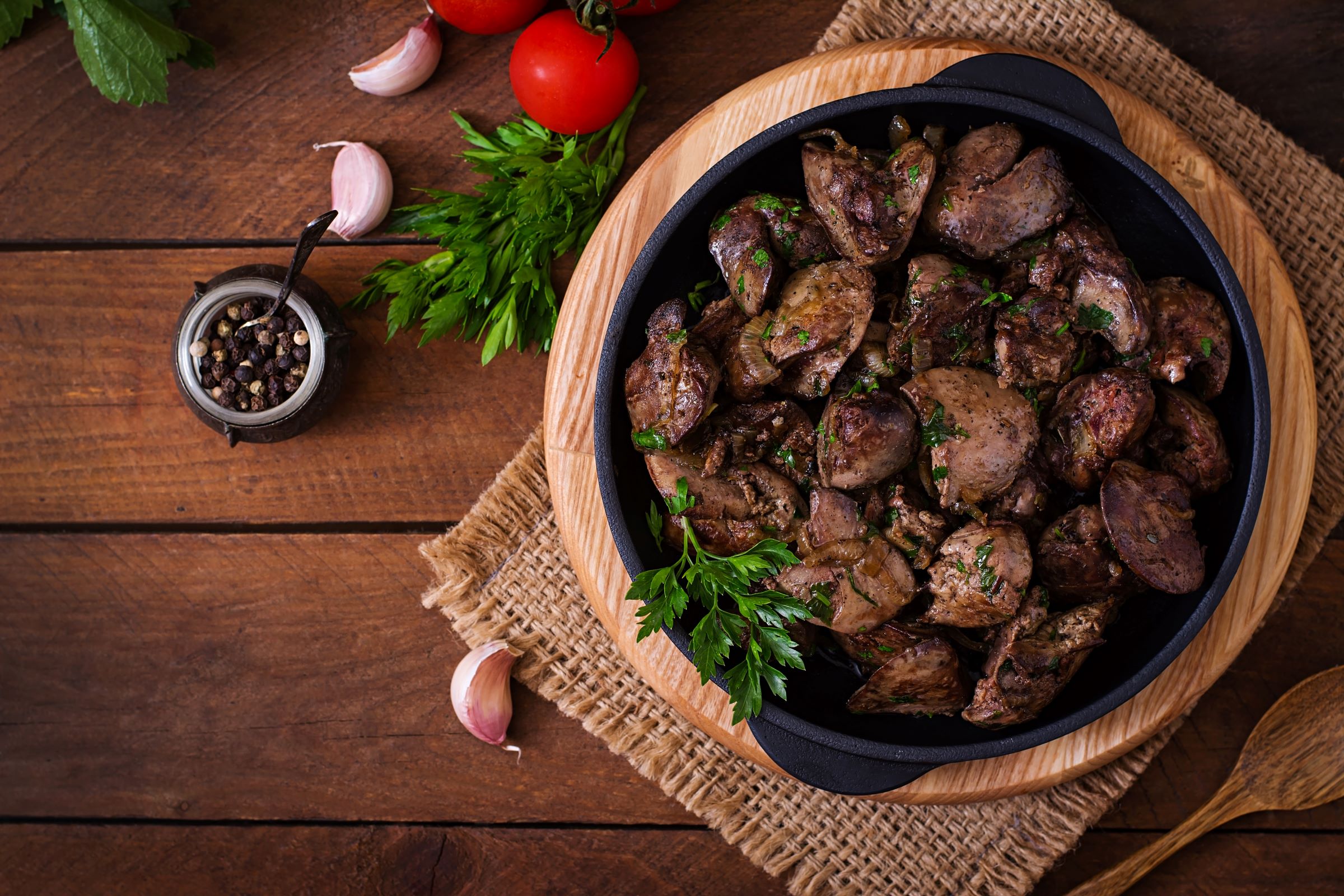
In many indigenous tribes and cultures worldwide, liver has long been a prized and famous food. Valued for its nutritional benefits, people transformed liver into unique and flavorful dishes, from chopped liver and liver and onions to liver pate. It seems many people either love liver or hate it. No matter where you stand, it’s indisputable that liver is one of the most nutritious superfoods you can find, and even if you’re not the biggest fan of the taste, there are ways to disguise it and cook it so you can still reap the benefits.

The nutritional profile of liver
The liver is a vital organ found in animals and humans that’s responsible for filtering toxins, storing vitamins, and more. For hundreds of years, organ meats have been the preferred nutrient source, but today, most people prefer muscle meats. The most commonly eaten liver is from cows, chicken, and lamb.
Liver is lower in fat than steak or lamb chops. It’s also low in calories but rich in nutrients like vitamin A, B12, iron, folate, copper, choline, and vitamin B2 (riboflavin).

Why is liver a superfood?
Even compared to our beloved colorful fruits and veggies, liver is the superior, impressive nutrition source that actually provides almost every nutrient your body needs. Liver even contains small amounts of vitamin C.
Just one little serving of liver gives you over 100% of your recommended daily intake (RDI) for most of the necessary nutrients. Mic drop. To put this into perspective, one small 68-gram slice of beef liver provides 19.8 grams of protein, 338 milligrams of phosphorus, and 239 milligrams of potassium. That’s why it’s considered a superfood and consumed in numerous cultures worldwide. For example, one serving of beef liver provides around 1,620% of the RDI for copper, which plays a role in brain functioning and iron metabolism.
These important nutrients have specific functions in your body. Folate is needed for cell growth and DNA formation, and vitamin B2 is needed for cellular function and development.
You need high-quality protein for building muscles, repairing cells, proper immune system functioning, and more. Beef liver is an excellent source of high-quality protein and essential amino acids that you have to get from your diet. Eating beef liver is an easy way to nourish your body with all these essential amino acids from one food. A higher protein intake has been proven to boost your metabolic rate. Protein is also satiating and keeps you feeling fuller for longer.

What about cholesterol?
While liver is high in cholesterol, research has proven that dietary cholesterol doesn’t significantly affect cholesterol levels in the bloodstream, proving that there’s more to the cholesterol picture. The popular belief was that cholesterol in food caused heart disease, but mounting evidence has shown this isn’t the case for most people.
Other factors are likely at play when it comes to heart disease and high cholesterol, including stress, infection, inflammation, and sugar. The cholesterol associated with heart disease is primarily produced in your body. When you eat more foods rich in cholesterol, your body produces less to compensate and maintain the balance.
According to the research, eating liver won’t hike up your cholesterol levels; however, the smaller portion of people who are sensitive to cholesterol in food might need to limit their intake.

How to include liver in your diet
Enjoy pan-fried liver and onions the old-fashioned way, or try a smooth liver pate on crispy French bread crackers or a liver, bacon, and onion casserole. A liver pate is a gourmet complement to your cheese and veggie tray. You can also add liver to meat-heavy dishes like meatloaf or enjoy a stir fry with liver along with your favorite meat.
If you don’t really like the flavor, you can disguise it by mixing liver into meatballs or burgers. You can soak liver in lemon juice before you cook it, and add your favorite herbs and seasonings to lower the intense flavor.
The liver is more affordable than many other types of meats, and if you’re looking to fuel your cells with solid nutrition, liver certainly gives you a bang for your buck. You can find it at most butchers and grocery stores. Many health enthusiasts believe organic liver from wild and pasture-raised animals is a cleaner and healthier choice.
Liver is still highly valued in plenty of cultures, tribes, and health and fitness circles. While it might not be as popular as it once was, it’s clear that liver truly deserves its superfood title and, like any superfood, the liver can be part of a nutrient-dense, balanced diet.



